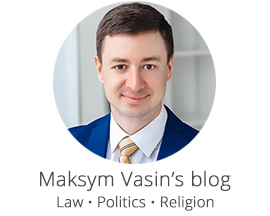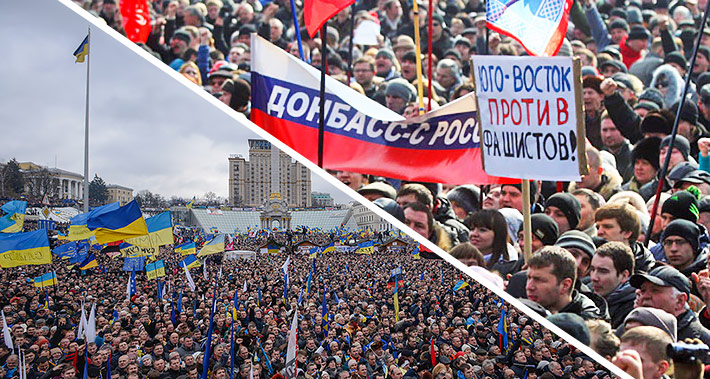Over the last four months the media, including Russian media, have been talking about how residents of the Donetsk region don’t support the uprising and rebels on Maidan because eastern workers prefer stability and labor to senseless demonstrations. Despite this, some of the same media, in covering the separatist provocations in Donetsk, Slavyansk, Kharkiv, Mariupol, and Luhansk, draw parallels with Maidan.
It is worth analyzing in detail how justified such comparisons are.
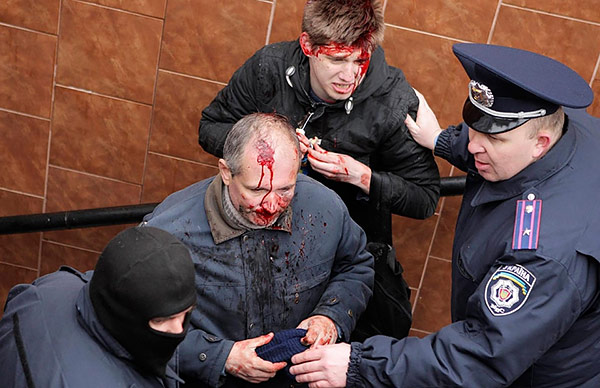
1. Maidan was the epicenter of resistance to repression from the Yanukovych regime and stood in defense of basic rights and liberties. The separatists in the east of Ukraine, on the other hand, are injuring people who don’t agree with them and terrorizing local residents.
Whereas Maidan emerged, from December 1, 2013 onwards, as a reaction to the bloody lawlessness of the Berkut police, the separatists in the east of the country have set about intimidating and terrorising the local population.
The Maidan protesters achieved a ‘Revolution of Dignity,’ calling through mercy and kindness for anti-Maidan demonstrators and internal forces conscripts to come over to their side (until they began firing on the protesters). The separatists, together with Russian provocateurs, are brutally beating and even killing Kharkiv and Donetsk supporters of Ukrainian unity.
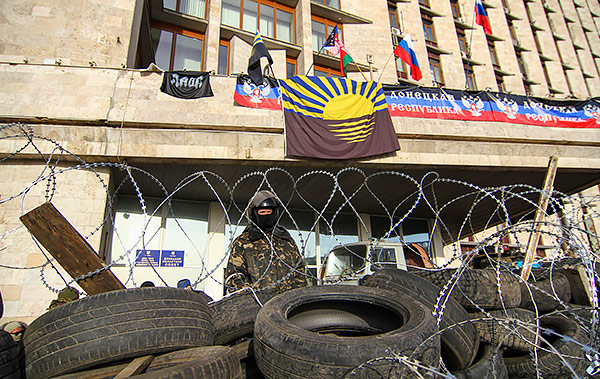
2. The Maidan protesters rejected the idea of seizing administrative buildings because they didn’t want to just change the people in power, but a corrupt and repressive system of power. The separatists have aimed at seizing administrative buildings in order to organize pseudo-referendums and give the appearance of popular support for splitting up Ukraine according to the Crimean scenario.
The Kyiv administration building was occupied by Maidan protesters only because the previous authorities had denied the people of Kyiv elections. The Kyiv Council’s term had ended in May 2013; the disgraced mayor Chernovetsky had resigned back in June 2012. For that reason, Kyiv’s people had the right to exercise power in the city. Other buildings were used by the protesters with the agreement of their administrations, such as the House of Trade Unions and the October Palace.
One sees in the separatists’ actions open, undisguised traces of the Crimean scenario aimed at Ukraine’s division. Defence of Russian speakers is simply a slogan used to destabilize the situation in the region, including by local officials who are frightened that they will face justice for their criminal corrupt dealings. Other horror stories at pro-Russian rallies – for example, about concentration camps in the EU and about the supposed financing of Maidan through the sale of the organs of abducted Russians to foreign clinics – are hard to even describe to a person capable of rational thought.
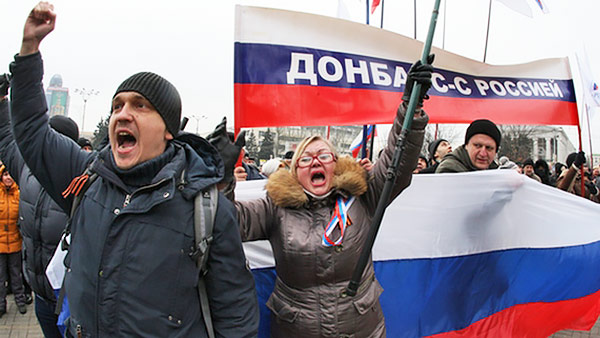
3. Maidan defended Ukraine’s sovereignty in internal and foreign affairs, whereas separatism in Donetsk, Luhansk, and Kharkiv is directed against Ukraine as an independent state.
The ideologues of the so-called Donetsk People’s Republic see the future of their creation within Russia. Yet illegal annexation along the lines of the Crimea model will not save Donbas from international isolation, legal chaos, the ensuing carving up of property, and the collapse of business and the subsidy-based coal industry, which the gas monopolists from Russia will see no sense in financing. As a result, the naïve expectations of a higher pension and better future risk leaving the workers of Donbas in real penury and the loss of jobs in closed mines and other businesses of the region.
By contrast, Maidan was against the previous regime’s decision to reject the EU-Ukraine Association Agreement, which would open European markets to the country without encroaching on Ukraine’s sovereignty. Only full membership in the EU would involve delegating a part of Ukraine’s powers to European structures in foreign policy issues, finance, and security. However, this is a question for the future and at present still very much up for discussion.
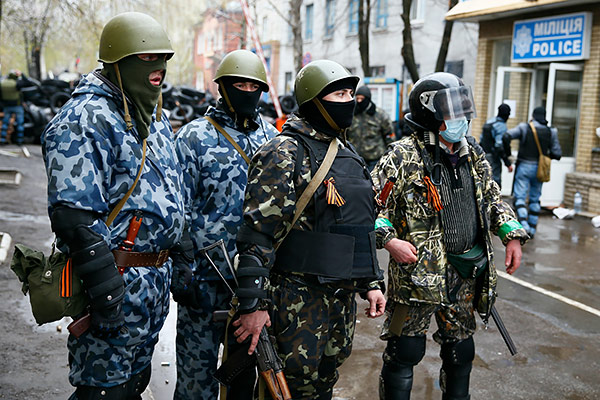
4. For more than two months, Maidan protested peacefully, until the police began shooting at demonstrators. The separatists immediately went for weapons, seizing the police and Security Service [SBU] ammunition stores, and organizing armed checkpoints.
Witnesses of the storming of Maidan during the night of December 10 to 11, 2013 remember how til morning unarmed protesters with their bodies alone held back several thousand police officers coming from three different directions. Right up to the first shots from Berkut police officers on January 19, 2014, Maidan activists did not use any special means or weapons to defend themselves.
We are now seeing in Slovyansk, Kramatorsk, and Horlivka in Donetsk Oblast well-armed and identically equipped fighters with Russian-made weapons (for example, AK-100s). Their actions cannot be called a peaceful demonstration or the defense of citizens’ rights, as the majority of local residents are outraged by the actions of the provocateurs from outside. This is confirmed by videos from the scene and by public opinion surveys.
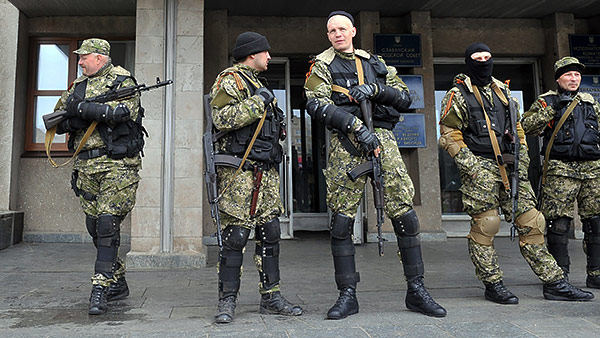
5. The obvious differences between the Maidan and separatists’ checkpoints
The checkpoints set up by Maidan supporters outside Kyiv and in other oblasts were organized as a form of self-defense against the dozens of coaches carrying titushki or hired thugs and Berkut officers whom the previous regime was bringing from all over Ukraine to the capital to cause disturbances and intimidate local residents.
Separatists in Donbas are organizing checkpoints with armed fighters in order to prevent Ukrainian soldiers defending the border with Russia, to stop journalists from covering the seizures of administrative buildings, and to stop the Ukrainian security service from reacting swiftly to subversive activities. All of this is justified by stories about the supposed invasion of ‘Banderovtsi’ [Bandera supporters] whom nobody’s seen.
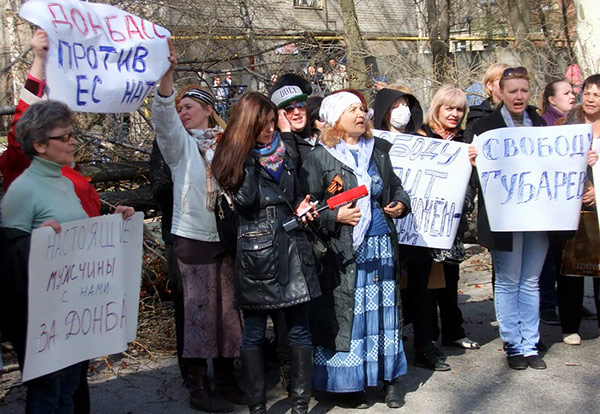
6. During moments of extreme danger on Maidan, women were asked to leave places of confrontation, and they were not allowed into the epicentre of conflict. The pro-Russian fights in Donbas, following Putin’s call, at times use women as a human shield against anti-terrorist operations.
Here we evidently have significant differences of a moral nature.
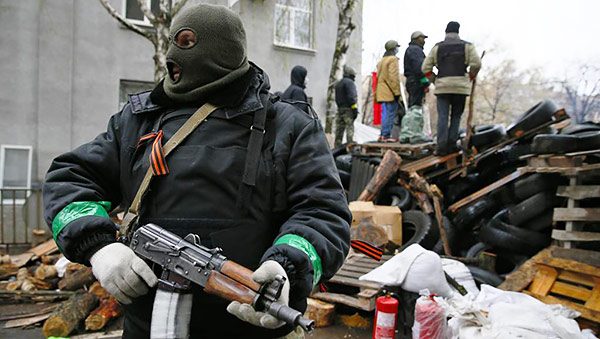
7. Maidan activists regarded the center of Kyiv as a territory of freedom since they found salvation there from the repression of the former regime and selfless support from compatriots. The separatists’ actions are rather frightening to ordinary residents of Donbas, who have always been inclined to support stability rather than rallies and armed disturbances.
You won’t find many positive comments about the separatists’ actions on social networks. It is extremely hard to present a picture of genuine happiness against the background of a state administration surrounded by barbed wire, or riflemen with an accent which is not typical of the region.
Disturbances provoked by saboteurs against the new Kyiv government are based on lies and purported threats, and therefore do not have wide public support. The pretense was well illustrated by the supposed Kharkiv residents who couldn’t cope with the Kharkiv metro, burned a ‘Bandera-supporter’ flag which was actually that of the Donetsk Shakhtar football club, and speak in a dialect which is not understood in Donbas.
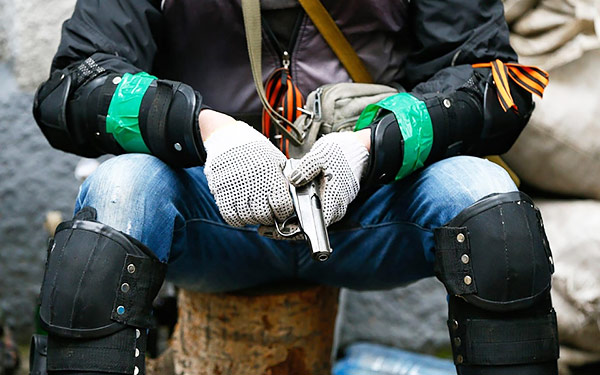
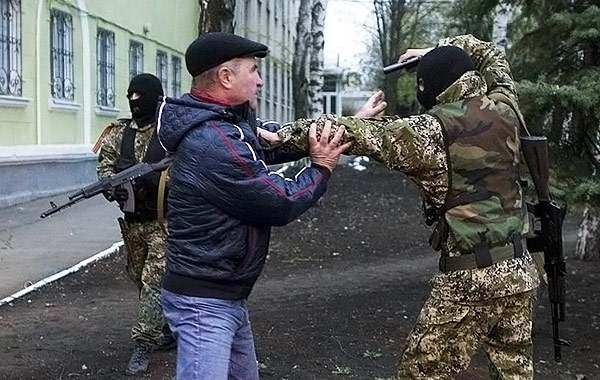
So what do we have?
The values of Maidan were truth and human dignity, because the regime had cynically distorted the essence of the protests and had tried to destroy freedom of thought. Real goals made it possible for people to give their lives for the freedom of all Ukrainians from tyranny and the total corruption of the previous regime.
Separatists are increasingly heating up the situation in Donbas. Their aim is to create a pretext and a springboard for Russian occupation – after all, Russian troops are very near the Ukrainian border. Some local residents support them, but for what? Are they willing not only to be plunged into chaos, but to sacrifice their lives in armed conflict provoked by separatists?
Maksym Vasin, lawyer (Kyiv – Donetsk)
